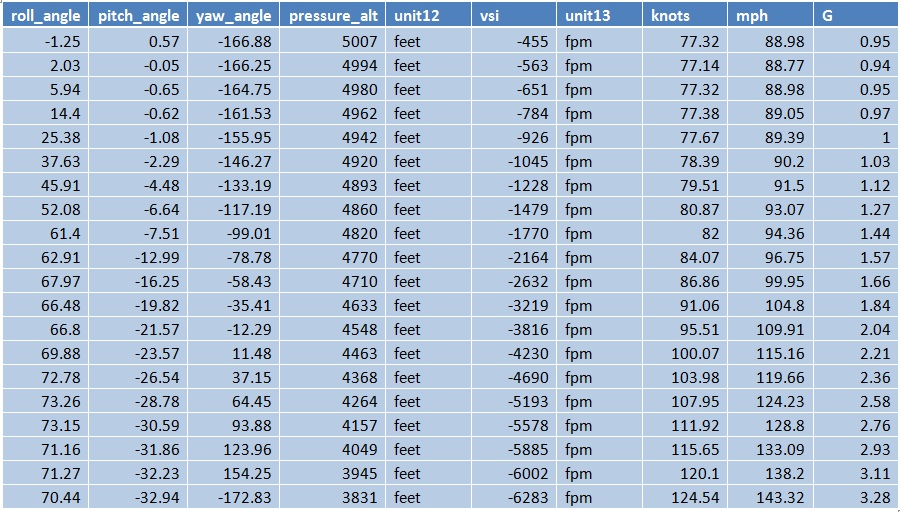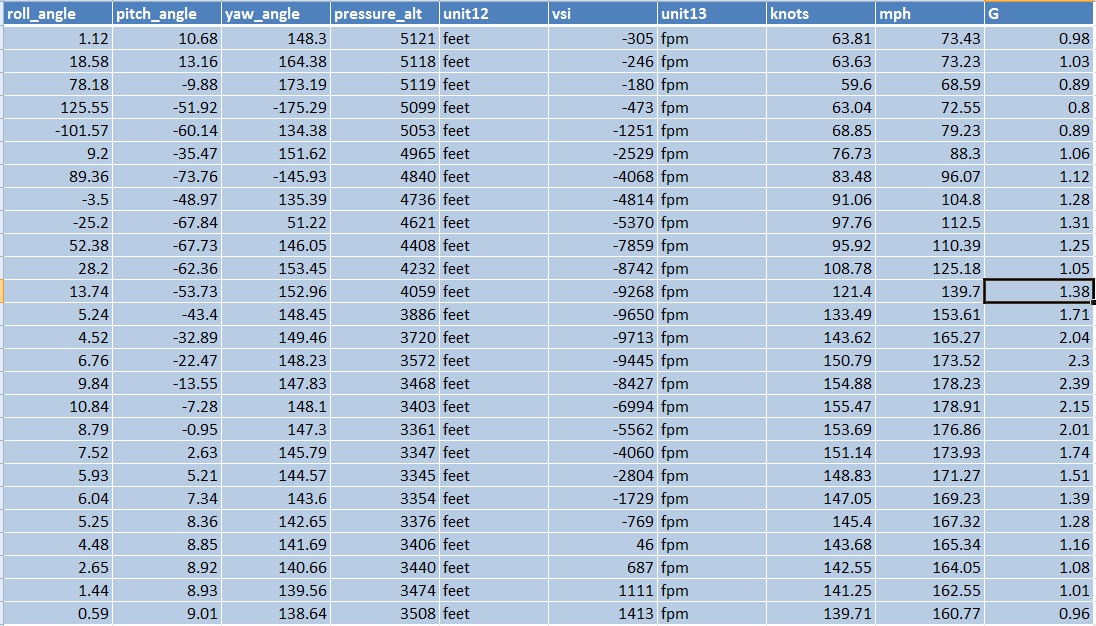smokyray
Well Known Member
CFIT...
Jamie,
It's always tough reading reports after the fact, especially when it's a bro, it never gets any easier. Imagine burying 14 of your bros over a 25 year career, combat and training, many of them "CFIT inconclusive".In this case the report lends a classic "stall/spin" scenario or as they say, "controlled flight into terrain" CFIT.
Having spun numerous RV's and having spun several RV7's at various CG's, the spin entry and recovery is very straightforward even if inadvertently entered. Unusual attitude training and spin recovery is something everyone should practice or at least have demonstrated. Regardless of what they were doing or what happened, the end result was the same.
Lesson? Vigilance: Fly the @#$% Airplane, all the time...
V/R
Smokey
I am dissatisfied with the report. I'm not saying that the final conclusion from the report was wrong, but that the information made available to the public was shallow and useless -- the entire point of these reports is to improve safety
Jamie,
It's always tough reading reports after the fact, especially when it's a bro, it never gets any easier. Imagine burying 14 of your bros over a 25 year career, combat and training, many of them "CFIT inconclusive".In this case the report lends a classic "stall/spin" scenario or as they say, "controlled flight into terrain" CFIT.
Having spun numerous RV's and having spun several RV7's at various CG's, the spin entry and recovery is very straightforward even if inadvertently entered. Unusual attitude training and spin recovery is something everyone should practice or at least have demonstrated. Regardless of what they were doing or what happened, the end result was the same.
Lesson? Vigilance: Fly the @#$% Airplane, all the time...
V/R
Smokey
Last edited:






